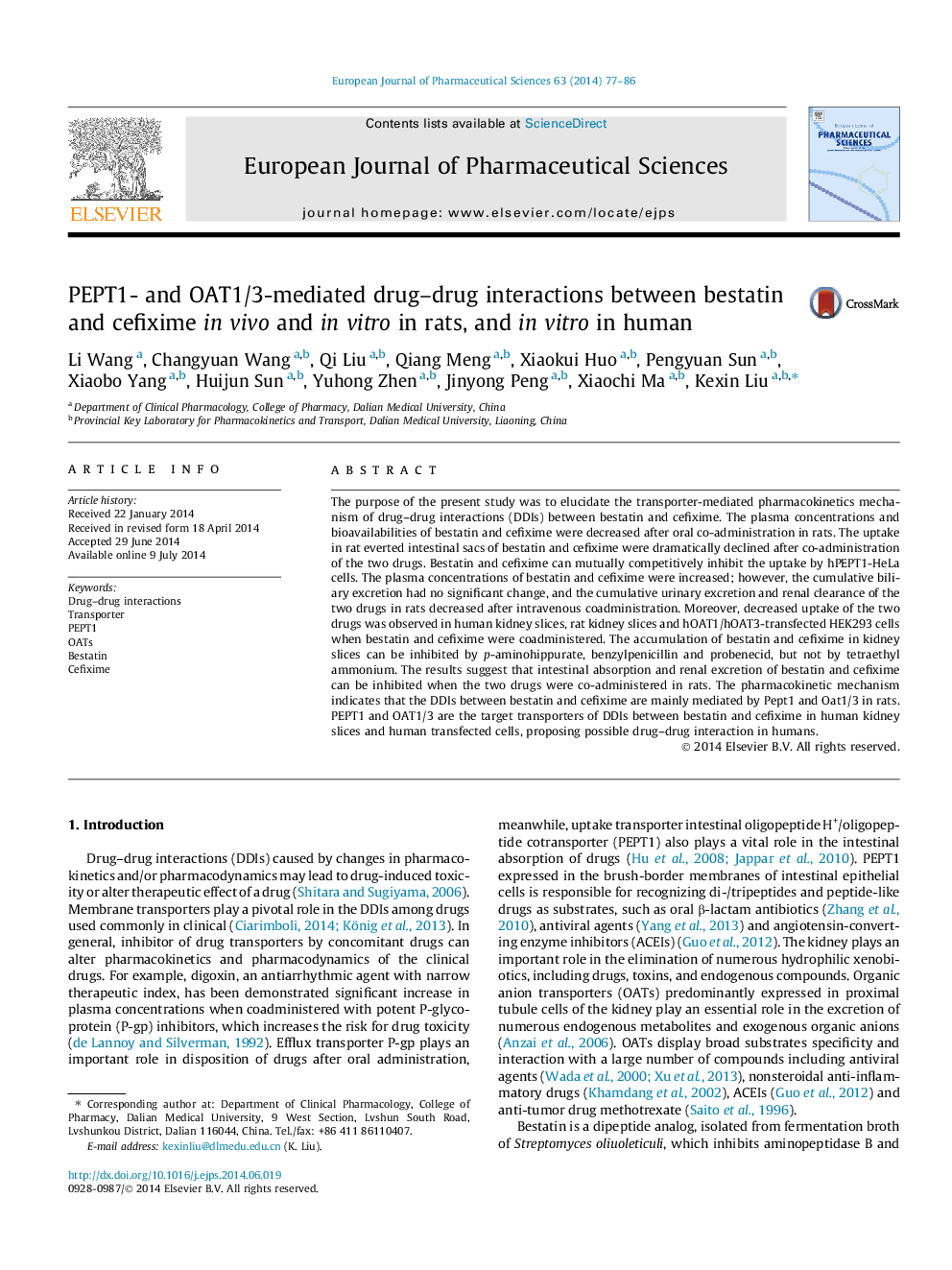| Article ID | Journal | Published Year | Pages | File Type |
|---|---|---|---|---|
| 2480486 | European Journal of Pharmaceutical Sciences | 2014 | 10 Pages |
The purpose of the present study was to elucidate the transporter-mediated pharmacokinetics mechanism of drug–drug interactions (DDIs) between bestatin and cefixime. The plasma concentrations and bioavailabilities of bestatin and cefixime were decreased after oral co-administration in rats. The uptake in rat everted intestinal sacs of bestatin and cefixime were dramatically declined after co-administration of the two drugs. Bestatin and cefixime can mutually competitively inhibit the uptake by hPEPT1-HeLa cells. The plasma concentrations of bestatin and cefixime were increased; however, the cumulative biliary excretion had no significant change, and the cumulative urinary excretion and renal clearance of the two drugs in rats decreased after intravenous coadministration. Moreover, decreased uptake of the two drugs was observed in human kidney slices, rat kidney slices and hOAT1/hOAT3-transfected HEK293 cells when bestatin and cefixime were coadministered. The accumulation of bestatin and cefixime in kidney slices can be inhibited by p-aminohippurate, benzylpenicillin and probenecid, but not by tetraethyl ammonium. The results suggest that intestinal absorption and renal excretion of bestatin and cefixime can be inhibited when the two drugs were co-administered in rats. The pharmacokinetic mechanism indicates that the DDIs between bestatin and cefixime are mainly mediated by Pept1 and Oat1/3 in rats. PEPT1 and OAT1/3 are the target transporters of DDIs between bestatin and cefixime in human kidney slices and human transfected cells, proposing possible drug–drug interaction in humans.
Graphical abstractFigure optionsDownload full-size imageDownload high-quality image (144 K)Download as PowerPoint slide
